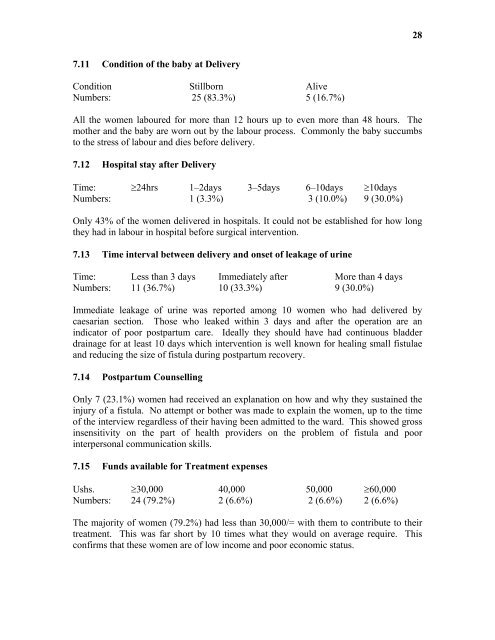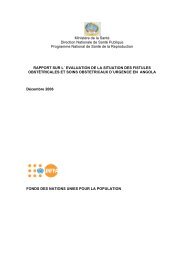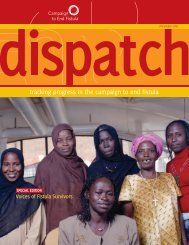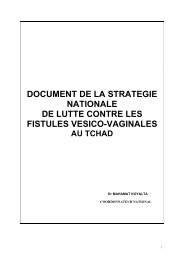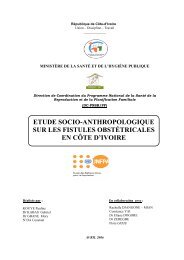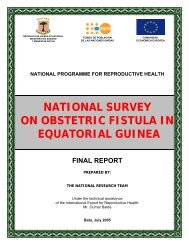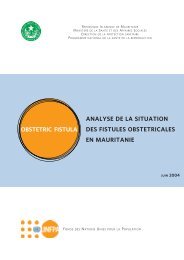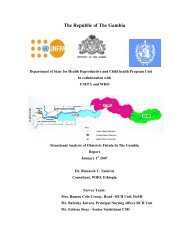Uganda - Campaign to End Fistula
Uganda - Campaign to End Fistula
Uganda - Campaign to End Fistula
- No tags were found...
You also want an ePaper? Increase the reach of your titles
YUMPU automatically turns print PDFs into web optimized ePapers that Google loves.
287.11 Condition of the baby at DeliveryCondition Stillborn AliveNumbers: 25 (83.3%) 5 (16.7%)All the women laboured for more than 12 hours up <strong>to</strong> even more than 48 hours. Themother and the baby are worn out by the labour process. Commonly the baby succumbs<strong>to</strong> the stress of labour and dies before delivery.7.12 Hospital stay after DeliveryTime: ≥24hrs 1–2days 3–5days 6–10days ≥10daysNumbers: 1 (3.3%) 3 (10.0%) 9 (30.0%)Only 43% of the women delivered in hospitals. It could not be established for how longthey had in labour in hospital before surgical intervention.7.13 Time interval between delivery and onset of leakage of urineTime: Less than 3 days Immediately after More than 4 daysNumbers: 11 (36.7%) 10 (33.3%) 9 (30.0%)Immediate leakage of urine was reported among 10 women who had delivered bycaesarian section. Those who leaked within 3 days and after the operation are anindica<strong>to</strong>r of poor postpartum care. Ideally they should have had continuous bladderdrainage for at least 10 days which intervention is well known for healing small fistulaeand reducing the size of fistula during postpartum recovery.7.14 Postpartum CounsellingOnly 7 (23.1%) women had received an explanation on how and why they sustained theinjury of a fistula. No attempt or bother was made <strong>to</strong> explain the women, up <strong>to</strong> the timeof the interview regardless of their having been admitted <strong>to</strong> the ward. This showed grossinsensitivity on the part of health providers on the problem of fistula and poorinterpersonal communication skills.7.15 Funds available for Treatment expensesUshs. ≥30,000 40,000 50,000 ≥60,000Numbers: 24 (79.2%) 2 (6.6%) 2 (6.6%) 2 (6.6%)The majority of women (79.2%) had less than 30,000/= with them <strong>to</strong> contribute <strong>to</strong> theirtreatment. This was far short by 10 times what they would on average require. Thisconfirms that these women are of low income and poor economic status.


